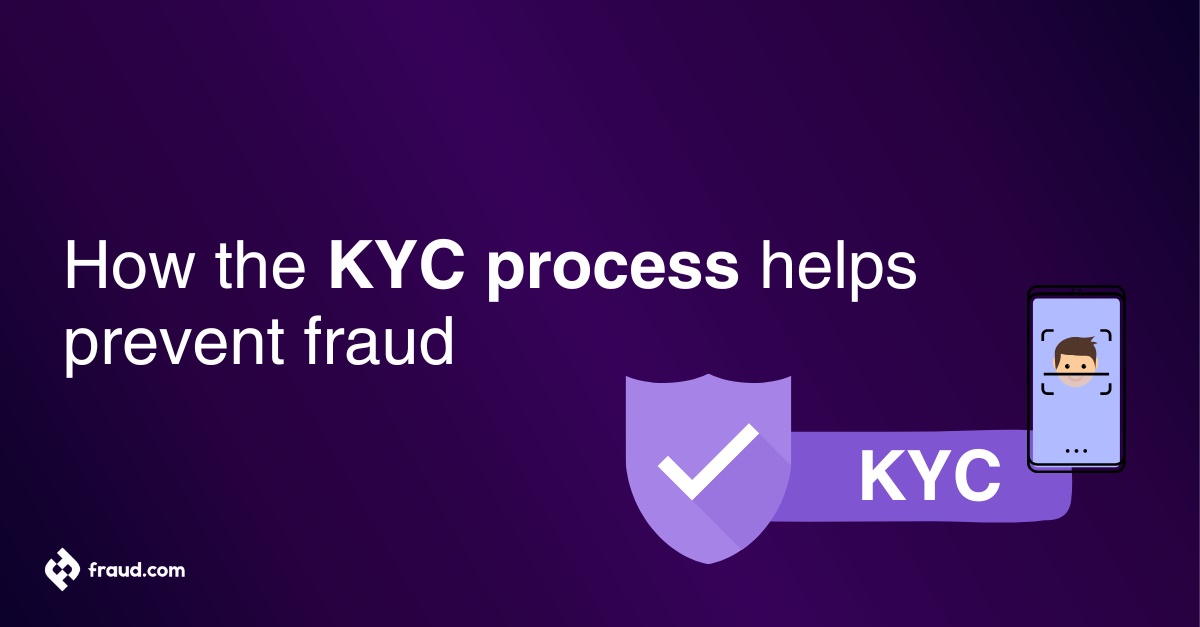SIM swap fraud is one of the most devastating forms of financial fraud that we face today. This form of fraud can be difficult to detect and can be costly for the victim to recover from. In this article, we will look at what SIM swap fraud is, how it works, and what you can do to stay safe from it. We will also look at the types of SIM swap fraud and the impact it has on victims.
Finally, we will discuss how you can protect yourself from falling victim to this type of fraud, and as a business what you can do to combat SIM Swap Fraud.
Table of Contents
ToggleWhat is SIM Swap Fraud?
SIM Swap Fraud is a form of identity fraud and account takeover fraud in which a fraudster can gain access to a victim’s mobile phone number by transferring it to a new SIM card they possess. Criminals can then impersonate a victim to gain access to their mobile phone account.
This allows them to hijack the victim’s phone number and receive calls, and text messages and other communications intended for the victim. The fraudster is then able to use this information to steal personal data and to access financial accounts, using the victim’s phone number to access their online accounts, make purchases and even steal their money, resulting in a sim swap scam.
How does SIM Swap Fraud work?
The following steps describe how SIM Swap Fraud works:
Step 1: The fraudster gathers personal information about the target. This information may be obtained through various means, including online research, data breaches, phishing, or social engineering.
Step 2: The fraudster contacts the mobile service provider and impersonates the customer. They will provide the personal information they have obtained in order to gain access to the victim’s account.
Step 3: The fraudster will then request a SIM Swap. This is where the fraudster will ask the mobile service provider to transfer the victim’s phone number to a new SIM card in the fraudster’s possession or the fraudster can request that the customer’s original SIM card be deactivated and have a new one issued.
Step 4: Once the SIM card is deactivated and the SIM Swap has been completed, the fraudster can use the customer’s phone number to reset the login credentials on the customer’s accounts, such as their email and online banking accounts. This includes two-factor authentication codes, which can be used to access accounts such as banking and email.
Step 5: The fraudster will now have access to any accounts, services and financial and personal information that are associated with the victim’s phone number. The fraudster accesses the victim’s accounts and uses them for their own gain. This may include transferring funds from the victim’s bank accounts, making purchases, accessing confidential information, or using the victim’s personal details for identity theft.
The risks and potential damage of SIM Swap Fraud
- The unauthorised takeover of a user’s SIM card: an unauthorised user takes over a user’s mobile phone number. This enables the fraudster to access the user’s phone account, personal information and even financial accounts.
- Data breach: An unauthorised user can access the user’s contacts, messages, emails and other sensitive information, leading to a data breach.
- Financial loss: The user is at risk of financial loss due to fraudulent transactions made using the user’s phone number.
- Identity theft: The user’s identity could be stolen, leading to further fraudulent activity on their accounts.
- Account takeover: The fraudster can take over the user’s online accounts, such as social media accounts, email and banking, leading to further financial loss.
- Privacy violations: The user’s privacy is at risk as the fraudster can gain access to their personal information, such as address and date of birth.
- Reputational damage: The user’s reputation could be damaged if the fraudster uses their personal information to carry out fraudulent activities.
- Legal issues: The user could become liable for any fraudulent activity carried out by the fraudster on their account.
Common techniques used by SIM Swap fraudsters
The most common forms of fraud to commit of SIM swap fraud include:
Account takeover fraud
In this type of fraud, attackers gain access to a victim’s mobile phone account by using fraudulent means such as social engineering or phishing. Once they have access to the account, they can initiate a SIM swap and take over the victim’s phone number.
Social engineering fraud
This involves tricking the mobile provider’s customer service representative into performing a SIM swap. The attacker poses as the victim and provides fake identification documents or personal information to convince the representative to swap the SIM card.
Insider fraud
This occurs when a mobile provider employee uses their access to customer accounts to perform unauthorised SIM swaps or sell customer information to fraudsters.
Port-out fraud
In this type of fraud, attackers convince the victim’s mobile provider to port their phone number to another mobile network by providing fake identification or personal information. Once the number is ported out, the attacker can use it to access the victim’s accounts and conduct fraudulent transactions.
Phishing scams
Fraudsters may send phishing emails or messages such as fake emails and texts that appear to be from the victim’s mobile provider, asking them to provide personal information or click on a link to a fake website. This information can be used to initiate a SIM swap or gain access to the victim’s accounts.
How to prevent SIM Swap Fraud
Mobile phone users should consider the following to prevent and avoid SIM Swap Fraud from happening to them:
- Create strong and unique passwords for all your accounts, and avoid using the same password across multiple platforms.
- Use two-factor authentication (2FA) for all your accounts, including your mobile phone account, and avoid using SMS-based authentication.
- Use a password manager to securely store and generate strong passwords.
- Avoid sharing personal information such as phone numbers or account details with strangers or untrusted sources.
- Be vigilant for phishing attempts and do not click on links or download attachments from unknown or suspicious sources.
- Regularly monitor bank statements and credit reports for any suspicious activity.
- Contact your mobile carrier immediately if you suspect that your SIM has been swapped without your authorisation.
- Ask your mobile carrier to add extra security measures to your account, such as a password or PIN.
- Use a virtual private network (VPN) when accessing sensitive information or making financial transactions over public Wi-Fi networks.
Moreover, organisations should also consider the following:
- Train employees on how to identify and report suspicious activity related to SIM swapping.
- Implement strict access controls and permission levels to limit access to sensitive data.
- Regularly audit and monitor user accounts and activity for any signs of unauthorised access or suspicious behaviour.
- Use encryption to secure sensitive data both in transit and at rest.
- Partner with mobile carriers to implement additional security measures, such as a password or PIN for SIM swaps.
- Develop an incident response plan that outlines the steps to be taken in the event of a SIM swap fraud attack.
- Conduct regular security assessments and penetration testing to identify and address vulnerabilities in the organisation’s systems and processes.
- Educate customers and clients on how to protect themselves against SIM swap fraud, and provide guidance on what to do if they suspect they have been a victim.
What Are Companies Doing to Combat SIM Swap Fraud?
Monitoring for suspicious activity: Mobile providers monitor customer accounts for any unusual activity, such as multiple SIM swaps in a short period.
Enhancing security protocols: Companies are enhancing security protocols such as two-factor authentication and PIN requirements.
Improving employee training: Companies are training their employees to identify and prevent SIM swap fraud and to report any suspicious activity.
Working with law enforcement: Mobile providers are working closely with law enforcement to investigate and prosecute SIM swap fraudsters.
Strong identity verification: Ensuring that only the authorised user has access to their mobile phone account. When a user initiates a SIM swap request, the mobile provider typically requires some form of identity verification to confirm that the user is who they claim to be.
Overall, companies are taking a proactive approach to combat SIM swap fraud, recognising that it is a significant threat to their customers and their business. By implementing advanced security measures and working closely with law enforcement, they are taking important steps to protect their customers and prevent fraud.
Preventing SIM Swap Fraud with aiReflex
aiReflex is a solution that leverages artificial intelligence and machine learning to prevent SIM swap fraud. Here are some ways that organisations can prevent SIM swap fraud using aiReflex:
Real-time monitoring: aiReflex continuously monitors mobile devices for SIM swap attempts and alerts the organisation immediately if suspicious activity is detected.
Behavioural analysis: aiReflex uses advanced behavioural analysis techniques to detect anomalies in user behaviour and identify potential SIM swap fraud attempts.
Machine learning: aiReflex’s machine learning algorithms learn from previous incidents and improve their ability to detect and prevent future SIM swap fraud attempts.
Overall, aiReflex can provide organisations with a comprehensive and advanced solution to prevent SIM swap fraud and protect their customers’ accounts and data.
Protecting your customers from SIM Swap Fraud with Udentify
Here are some ways that Udentify can be used to prevent SIM swap fraud:
Strong identity verification: Udentify validates a person’s official identity before registering their biometrics, ensuring that the person presenting the identity document is genuine and present in the process. This can help prevent SIM swap fraud by ensuring that only the authorised user has access to their account.
Biometric authentication: Once Udentify has verified a user’s identity, they can use various biometric authentication methods, such as facial and voice recognition, to access their accounts. This can prevent SIM swap fraud by ensuring that only the authorised user can access their account.
Two-factor authentication: Udentify can enforce two-factor authentication, adding an extra layer of security to prevent unauthorised access to accounts.
Cloud-biometrics: Udentify’s cloud-biometrics provides more flexibility and scalability when carrying biometric authentication, allowing for centralised management and processing of biometric data. This can be useful in enterprise-level applications, preventing SIM swap fraud by ensuring that all users’ biometric data is managed and stored securely.
Overall, Udentify can provide organisations with a comprehensive and advanced solution to prevent SIM swap fraud and protect their customers’ accounts and data.









